|
It’s been almost 9 years since our very first card game, Viewpoint, was released in September 2009. Since then, we followed it up with its sequel, Viewpoint Reflections, and two other passion projects – Monster Town and No Fish! We think it’s time to introduce Viewpoint to the next generation of gamers and show those who have enjoyed Viewpoint since day one how much better this new version is. And, to continue the theme of vision-related puns, we’ve called the new game Viewpoint Revisioned. Viewpoint Revisioned takes all the great things from the original game and enhances them for an even greater gaming experience. ARTWORK While it wasn’t everyone’s cup of tea, the original Viewpoint artwork captured a retro art style suited to games of the era. The artwork for Viewpoint Revisioned, however, transcends all eras and shows how committed we are to producing games that are visual masterpieces. Our illustrator, Kerri Aitken, and graphic designer, Ashley Kenawell, are two of the most gifted artists that we’ve met. Once you feast your eyes on their work, I’m sure you’ll agree. STORYLINE We introduced gamers to the eye folk in Viewpoint and Viewpoint Reflections; however, Viewpoint Revisioned goes far beyond basic one-eyed characters. Viewpoint Revisioned introduces the Blinkers (Eyenstein, Iris and Hawk) who, after a cataclysmic lab accident, are lost blinking between different dimensions in the Viewniverse. Viewpoint Revisioned is just the first set in an all-new episodic Viewpoint card game series. Each set introduces new worlds and new characters for the Blinkers to encounter. We are fully committed to providing a fun-filled and expansive narrative and have developed the design, storylines and artwork for three additional sets with even more on the way. Check out our website for more information on these Viewpoint episodes. Episode 1: Viewpoint Revisioned Episode 2: Eye vs Eye Episode 3: Prehistoric Park Episode 4: The Winking Dead GAMEPLAY Just as in classic Viewpoint, players collect Viewpoints to help the Blinkers back to their home world of Myclopia. However, from Prehistoric Park onwards, players must meet additional challenges to survive or fulfil alternative goals to win the game. We’ve also designed each set so that it can be played as a standalone episode or mixed in any combination for a deeper, more challenging gaming experience and an even more thrilling adventure. “Will you be eaten by one of Dr Crichton’s creations in Prehistoric Park? Will you survive the Zombeye plague in The Winking Dead?” PRODUCT QUALITY We’re not only bringing players exquisite artwork and action-packed gameplay but we’re also packing it into a product with the highest quality components. Using the lessons learned from classic Viewpoint and our other games, we’ve implemented a lot of intelligent design into what will be the final product. Some product design highlights include:
WHAT’S NEXT? Whilst our illustrator and graphic designer are very busy crafting the artwork and visual style that will showcase Viewpoint Revisioned and the next three sets, we are finalising the rules for all sets, with particular attention being paid to Prehistoric Park, our most innovative design yet. As we move closer to the Viewpoint Revisioned funding campaign in September/October 2018, we’ll be spending more time showcasing how much fun a Viewpoint gaming experience is. This means that we’ll be visiting local game stores/clubs and attending expos to spread the word. If you’d like to join us on our journey, then here’s what you can do… GAMERS: We have Print & Play (PNP) copies of the first four Viewpoint Revisioned episodes on our website. We’d really appreciate you giving the game a play and sending us as much feedback (in person or via our website or [email protected]) as you’d like so that we can adjust the rules to deliver the best gaming experience possible. REVIEWERS: Production quality prototypes of Viewpoint Revisioned will be available at the end of August 2018. We’ll be sending plenty of these out to reviewers but, if you have a particular interest in Viewpoint Revisioned, we’d love to hear it so that you can be one of the first to receive a copy. STORES: We want to work with you to help promote Viewpoint Revisioned to your gamers. We’ll be contacting many of you leading up to the launch of Viewpoint Revisioned and asking to come in and demonstrate how exciting a Viewpoint experience can be. If you’d like to get the jump on this exciting new game then feel free to drop us a line on our personal emails ([email protected] and/or [email protected]). STAY UP TO DATE
You can be kept in the loop about Viewpoint Revisioned and other episodes via all the regular social networking channels: FACEBOOK (https://www.facebook.com/93MadeGames) TWITTER (https://twitter.com/93MadeGames) INSTAGRAM (https://instagram.com/93MadeGames) TUMBLR (http://93madegames.tumblr.com/) BOARDGAMEGEEK (https://www.boardgamegeek.com/boardgamepublisher/10997/93-made-games) Or simply stay in contact via email ([email protected]) or by visiting our website (www.93madegames.com.au).
0 Comments
After successfully reaching our funding goal, we are now able to give gamers a sneak peek at the production samples of Monster Town. Due to feedback received during the Kickstarter campaign, the game was changed from being split across four deck boxes (one for each gang) to one box containing the full game. A lot of the artwork has also been redone and looks wonderful when compared with the washed out images of the prototypes. Production will be completed by 5 June and the game will be in select stores and in the possession of our Kickstarter backers by mid-July. As well as receiving copies of the game, certain Monster Town backers will receive limited edition merchandise, such as Monster Town playmats, the Art of Monster Town book, artprints and so on. All backers have been listed in the credits in the Monster Town Comprehensive Rules but we'd like to give special mention to the following backers and supporters of Monster Town:
Monster Town - Bite off more than you can chew. Ever dreamt that you were fighting monsters in a B-grade horror film? Maybe you had just encountered Monster Town.
93 Made Games opens their master design file and looks back over the last five years of the development of Monster Town. There are many differences to the original concept; however, a few key themes and gameplay elements have survived half a decade of play-testing. Just three months shy of 93 Made Games' first birthday, Monster Town Lead Designer Anthony Condos, conceptualised an adventure card game where players would reveal locations (to be captured) and encounters (to be dealt with) from a central deck. Whilst this doesn't sound too different from the final game, it was the players rather than their gang members who were directly affected by the locations and encounters. Also, because there were no gangs, there was also no combat. Thus, the first change was to add gangs and combat cards through which gang members could 'attack' each other, suffer wounds and be killed off or turned. This also introduced the idea of different races - Humans, Vampires, Werewolves and Zombies. Combat was further expanded to include combat abilities on the gang members and a mechanism to limit the exploitation of powerful abilities through the consumption of 'power'. So this is the origin of the blue Power Dice. Through further play-testing, the design team found that the basic win condition of, what was then, capturing a set number of locations would not always be achieved prior to the location/encounter deck running out of cards. This lead to the creation of the 'end game' phase where a free-for-all final combat would ensue, with the winner being the player who had the last gang standing. The victory conditions were further tweaked over the five-year development and included timed games, combat-only games and varying the number of locations required to win. Eventually, the design team settled on a 'conquest points' system where players needed to reach 10 conquest points to win with locations being worth 1 each and gang members being worth varying amounts but only if killed during the end game. At around the same time the end game phase was devised, Anthony started work on the artwork. Preliminary designs were rudimentary in order to get across the basic themes but were soon improved by using models for each of the gang members and non-playing characters used in the game. You may notice that all of the gang leaders look an awful lot like someone who is very closely involved with the creation of the game. Whilst Anthony was compiling the artwork, he also added special items (weapons, armour and augmentations (which were at the time simply known as special abilities)) as a card type. Originally, each gang deck was going to include 10 special items; however, this number had to be reduced so that all of the flavourful combat cards could be retained. Fortunately, many of these special items will be included in the Reinforcement Packs that will be available to Kickstarter backers. With the addition of special items and the artwork coming along nicely, the design team's next big job was to streamline the game by removing superfluous cards and rules. The first to go were the double-sided follower/attacker cards. Whilst having an image of a follower on one side and an image of an attacker on the other was visual appealing, it took away from the suspense and surprise of revealing cards from the location/encounter deck. Therefore, only one image was used and both effects were moved to the same side of the card. Another significant change was the introduction of uncapturable locations, which played similarly to encounters but kept the theme of travelling through Monster Town. The game was eventually trimmed down from 200+ different cards to a much more manageable number across four gangs. Even though the flavour of the game had been built up from an early stage, the specific themes and history of Monster Town and each gang was thin on content. This is where Design Manager Sean Carroll came up with the idea of 'power' representing the emanations from 'The Dark Spire', a mysterious monolith that has corrupted the denizens of Monster Town. The backstories of the gangs were fleshed out from this basis and thus Humans became the Renegade Militia, Vampires would be known as the Brotherhood of the Fang, Werewolves would don the name Wölfenpack and Zombies were all too obviously titled The Living Undead. The last few months of design and development included some radical but necessary changes, such as the adjustment to scouting where players originally were able to reveal all of the scouting cards at once instead of one card at a time. This further increased the suspense and the “edge-of-your-seat” action that the game provides. After five hectic years of development, Monster Town is now ready to claim. Successful beta play-testing has been conducted with no holes found whatsoever. We used some of our most cunning play-testers, who have repeatedly broken our alpha prototypes, to ensure the fidelity of the game. And also to make sure Monster Town is still as enthralling to play as ever. We will be launching the Monster Town Kickstarter campaign in the very near future so stay tuned to 93 Made Games for comprehensive details on all of the amazing rewards that are on offer. Monster Town is an expandable card game set in a fictional city whose denizens include all manner of supernatural beings, such as Vampires, Werewolves and Zombies. Players command their gang and wage brutal combat against each other as they journey through Monster Town. The backstory of Monster Town is told in reverse narrative, where the first game is actually the last chapter in an intriguing chronicle. Each expansion adds to the story and unravels the mystery behind the appearance of the Dark Spire - an ethereal power source that has warped the citizens of Monster Town.
My name is Anthony Condos and I am both a game designer and artist for 93 Made Games. I am, by nature, a creative personality. For me, being both a designer and artist gives me almost a paternal feeling towards my work. Watching something I have helped create, develop and blossom into something not just for myself to admire but for others to enjoy is extremely fulfilling. As a designer/artist, I get to watch my work as it develops from a concept, grows into a work in progress and then matures into a final product. Then I, as the proud creator, get to see what it becomes. In my personal opinion, invention and innovation are the pathways to the happiest place in which a designer/artist can be. Seeing your creations come to life and be seen by the outside world, whether admired or criticised, is a truly humbling experience. My work on Viewpoint was my first attempt as an artist and I am proud of the final product and it is one of my proudest life endeavours to date. With Viewpoint Reflections, it was a different kind of achievement I saw in this work as I saw not only my artworks advance and mature for the better. I also saw these same attributes in myself as an artist as well as a human being. Lastly, with my work on the soon to come Monster Town, not only have I once again seen advancement and maturity with this project but I also get to feel pride in my having involvement in the actual design of the game and I eagerly wait to see what it develops into. Monster Town is an action-packed card game where players control gangs of Human soldiers, Vampires, Werewolves and Zombies. The aim of Monster Town is to command your gang, form alliances and annihilate all other clans. Monster Town can be played by 2 to 4 players from ages 9 and up. Each game takes around 45 minutes to play.
Whilst, as a designer, I like to keep most game elements simple, I purposefully went against my own guidelines when I created the Two-Way Mirror card for Viewpoint Reflection. I did this because when you understand how Two-Way Mirror works, it becomes really enjoyable to play with. I felt that this was a reasonable compromise so long as I could provide a simple explanation of how the card functions. Read on to see if I accomplished that. The rules text on Two-Way Mirror (10 View-points) states: REVEAL: Put this card into your Field of View. Make any other player play the top card of the Draw Pile into their Field of View (the actions on that card are performed as normal). You then perform the actions on that card (except for the REVEAL actions). So for beginners and even some experienced Viewpoint players, this card looks like it does too many things to bother using. However, in short, using Two-Way Mirror is like giving another player a free card play (from the top of the Draw Pile) and then copying that card play using Two-Way Mirror. i.e. Similar to using the copy ability on Mirror Image. This seems easy enough when playing casually but the real power and enjoyment from using the card comes when you understand the variety of interactions possible with it, which are explained below.
REVEAL The actions on Two-Way Mirror are listed after the REVEAL keyword. This means that it can be revealed at any time, during any player's turn, without costing you a card play. That's right! It is effectively a free card play. Put this card into your Field of View. When Two-Way Mirror is revealed, it is placed into your Field of View. This means that you get 10 View-points for free. So if you have played your normal card play for the turn and you are on 90 View-points, you can reveal Two-Way Mirror during your turn to take your total View-points to 100 and, in most cases, win the game. Make any other player play the top card of the Draw Pile into their Field of View (the actions on that card are performed as normal). All this means is that you choose any other player to take the top card of the Draw Pile, who must then put that card into their Field of View and follow what the actions on that card say. So if the card is Blink, they draw two cards. If it is Blind Spot, they make another player discard one card. However, if there are no cards left in the Draw Pile when the other player attempts to play the top card from it, they do nothing instead. This also means that you can't do the next part of the what the card says because there will be nothing to copy. You then perform the actions on that card (except for the REVEAL actions). If Two-Way Mirror is still in your Field of View after the other player has played the top card of the Draw Pile and performed the actions on the card, and the played card remains in any player's Field of View, you then perform the actions on the card. If the played card has been nullified (i.e. moved to the Discard Pile, to a player's Hand or to the Draw Pile) then there will be no card to copy and nothing else happens. Irrespective of whether or not the played card has been nullified, if Two-Way Mirror is removed from your Field of View, you may not copy the card. Basically, if there is no card to copy or your Two-Way Mirror is no longer in your Field of View then you can't copy anything. However, if the Two-Way Mirror card is moved to another player's Field of View at any time and the played card has not been nullified then the player who has the Two-Way Mirror card may copy it. Note that Two-Way Mirror can only copy a card for each time it is revealed and the card it is copying can't be changed once it has been chosen. Examples of how the played card or Two-Way Mirror may be nullified/removed include:
Examples of how Two-Way Mirror may be used to great advantage:
Because revealing Two-Way Mirror can be a big gamble, your opponent may get far more advantage out of it than you, such as in the following example:
Even though Two-Way Mirror can be a very degenerate card, it is not completely broken when it is used to take another turn. i.e. When it is used to play See Into The Future or Foresight during another player's turn, the extra turn is taken after you have your next turn (or would miss your next turn). There are plenty more devious actions you can perform with Two-Way Mirror but I will leave discovering those up to you. If using the Two-Way Mirror card is still ambiguous or you want some more tips on this card or any other aspect of Viewpoint then feel free to contact our designers. G'day Gamers! The release of Viewpoint Reflections sees the introduction of new keywords, changes to existing mechanics and the addition of potential card interactions. The updated Viewpoint Tournament Rules details the specifics of these new and modified elements, including the rules on how cards from Viewpoint and Viewpoint Reflections can be mixed for tournament play. Read below for a summary of the most significant changes. New Keywords There are two new keywords introduced in Viewpoint Reflections - PASS (found on Hypnotise, Glance Left and Glance Right) and REPLACE (found on Eye for an Eye, Eye Transplant and Second Sight). PASS - The player must take a card from their Hand and move it to the Hand of a specified player. PASS is essentially a watered down version of the STEAL action because the player 'targeted' gets to select the card to give to the other player. Some cards make every player pass a card at the same time. When this happens, you are not allowed to pass on the card that is passed to you. Also, if you don't have any cards in your Hand, you obviously don't need to pass a card. REPLACE - The player may move up to a specified number of cards from their Field of View and put them face-up into the Discard Pile. The player then plays cards (one at a time), equal to the number of cards they put into the Discard Pile, from the top of the Draw Pile into their Field of View. The actions on the newly played cards are performed as normal. Using the REPLACE action is a bit of a gamble. Sometimes you will replace a mediocre card with a really good card but other times you will end up wasting the replace action by flipping a worthless card. Note that actions that can cancel cards that would move any cards from a Field of View to the Discard Pile can also cancel REPLACE actions. Changed Mechanics The most significant impact to the way how cards interact is brought about the new ruling that cards are now considered to be in a Field of View as soon as they are played. This affects the way cards can be cancelled. Originally, cards like Persistence of Vision could only cancel non-reveal actions, such as Mirage and Skewed View. These cards can now cancel any action that would move a card from a Field of View by any means. Therefore, cards like Lighthouse, which cancels cards being played, can be cancelled by revealing Persistence of Vision (or Wandering Eyes) to stop Lighthouse from moving a card being played (now to be considered in a Field of View as soon as they are played) from a Field of View to the Discard Pile. Players must still nominate the 'target(s)' when the card is played (or revealed) before any other player is allowed to respond to that play/reveal. Here are a couple of examples of how things work with this rules change. Example 1
Potential Interactions There are plenty of interesting interactions introduced by Viewpoint Reflections, including the 'counter-chain' made possible with the Counterspy card.
The revised Viewpoint Tournament Rules includes more answers to your frequently asked questions so be sure to consult this lexicon or email the designers if you have any queries on the rules of Viewpoint. Read on for an exclusive insight into the motivations of the designer of Viewpoint and, its upcoming expansion, Viewpoint Reflections.
On the verge of the release of Viewpoint Reflections, I pondered, “Why did I create this game?” I mean, I could have joined the MasterChef craze and taken up cooking classes. Or perhaps I could have undergone training for a series of triathlons. Maybe I could have bought a runabout to aid me in honing my fishing skills. I like to cook, swim, run, cycle and fish so all of these are relatively viable challenges that I could have taken up. However, when it all comes down to it for me, these activities don't provide the remarkable experiences you have when you are trying to nurture a game from its concept to its release. To paraphrase a well-known saying, “It's not the destination but the journey that makes creating games worthwhile”. I still think the destination is crucially important but the journey just contains so much damned fun! I like to break down the process of designing and releasing games into five main steps:
These steps are generally performed in order but all activities can be conducted in unison to varying degrees. The conduct of each step provides many opportunities for partaking in a variety of enjoyable experiences and encounters and the process of creating Viewpoint Reflections was no different. Brainstorming Ideas Brainstorming ideas for the design of an expansion set, such as Viewpoint Reflections, is like a double-edged sword... you have the advantage of not having to design the game from the ground up but you also need to constantly keep the flavour and gameplay of the original in mind so you don't come up with ideas that make absolutely no sense when combined with the original game. Fortunately, we had plenty of constructive feedback from those who played the original Viewpoint so the task of brainstorming was shared between fans of Viewpoint and ourselves. This meant that we could collated a large and diverse range of ideas and themes for Viewpoint Reflections. Two of the most iconic cards in Viewpoint Reflections came from fan feedback - Counterspy (which can be used to cancel STEAL actions) and Refocus (which is used to reshuffle the Discard Pile into the Draw Pile). Because we wanted to increase the flavour of Viewpoint in the new set, plenty of brainstorming went into the theme of each card and the set as a whole, and the design of some cards was based on their theme instead of gameplay mechanics. For example, we brainstormed the idea of two new characters - Dirk and Pedro, the Lazy Eyes - for which a card would need to be designed. Then we thought, what would Lazy Eyes do in Viewpoint... impair your vision... so we made the Lazy Eyes card make you place two cards (as they are Lazy Eyes) from your Hand on top of the Draw Deck. There is a plethora of other ideas that we brainstormed that didn't make it into Viewpoint Reflections, including those which will definitely be included in future sets (the Zombeyes) and those that were so far out that, if introduced, the game could lose its family-friendly G-rating. In short, brainstorming game ideas is one of the most enjoyable free-thinking activities you can do. You can let your collective subconsciousness come up with the wildest and most wonderful ideas without having to justify anything. Design and Internal Play-Testing Soon after the release of Viewpoint and the initial collation of ideas from the brainstorming activity, I began the design of a series of expansion sets for the game - Viewpoint Reflections, Viewpoint Eye vs Eye and Viewpoint Blackout. To assist in this process, I created four lists of cards, including lists of cards that seemed suitable for inclusion in each of the expansion sets and one list of cards that didn't quite fit any of the sets but might be suitable later with a few tweaks. Once I got to 70 cards in the Viewpoint Reflections list, I produced a rough prototype for testing within the company and solo play-testing. I quickly discovered through testing what cards really weren't suited for the theme of the set and which would require some amendments to their mechanics. Cards like Reflective Glare (which acted like the Reverse card from UNO), whilst fitting perfectly with the theme, had a mechanic that didn't quite do what an iconic Viewpoint card should do. Other cards like Colour Blind (which would have allowed players to swap negative value card with positive value card) simply didn't stack up during internal play-testing to be a card suited to Viewpoint Reflections. Cards like Focus Attention, which was kept from the original list, had to be tweaked so that their View-points were adequately balanced with their actions. The act of refining a game design is very challenging yet rather rewarding as it really pushes you to learn how to balance essential themes with enjoyable mechanics. Without this step, cards such as WYSIWYG (What You See Is What You Get), which would have allowed players to return all of their cards from their Field of View to their Hand, might have seen every Viewpoint game go for 8 hours long. Development and External Play-Testing After a few months of internal play-testing and refining the design of Viewpoint Reflections, I sleeved up a more formal prototype (now including sublime sketches from our lead artist Anthony Condos) and took it to some of our favourite game clubs and stores for independent play-testing - UNSW Gameplayers Society, UOW Guild Gaming Society, Mega Games and Good Games. To ensure I collected as much feedback as possible during the in-club/in-store play-testing, I developed a form on which play-testers could provide feedback and suggestions for improving the game. I received some quirky feedback like “needs more naked women”. However, I received so much quality input from the first few sessions that I went back to the design stage and conducted further in-house testing. What came out of this was a robust base prototype, which was used in subsequent months to conduct additional external play-testing and refinement. During the refinement of the card mechanics and rules of the set, we also continued developing the theme of the set. This was done by introducing more characters and story-lines, such as Eye Guy's mission to stop Evil Eye Guy from conquering the View-niverse. Anthony created more great artwork, which you can find in Viewpoint Reflections, future expansion sets and upcoming Viewpoint cartoons. This stage is so much fun... you get to meet and play games with some many kind and wise people. You also get to share your creation with those people and have them be a part of it. There aren't too many pastimes where you can do that. Sampling and Production Once we were happy with the theme, cards and overall gameplay experience that the set provided, we started preparing the artwork for manufacturing the game and searching for a manufacturer that could meet our quality criteria. Since this set was based on the original Viewpoint game, it was easy to use the core graphics to produce the images for the new cards. By this stage, Anthony had already produced most of the images to be added to the cards. Therefore, only small adjustments were required to get the artwork ready for manufacturing. Whilst preparing the artwork wasn't too time-consuming, the process of searching for potential manufacturers and eliminating those that didn't meet the required grade took much longer than we had expected; even based on our previous experiences. Halfway during the design of the new set, we chose to terminate our arrangement with the manufacturer of the original Viewpoint release based on a number of unsavoury follow-on dealings we had with them. From this experience we chose to increase the rigour in our policy for assigning manufacturing contracts. We widened the pool of manufacturers from whom we sort quotes and ensured that the onus would be on them to perform. We assessed each quote carefully and produced a short-list of two candidates. We then got both candidates to produce a few samples for assessment. Whilst the samples from both candidates were fairly good, we felt that only one of the candidates had really understood what we needed in the final product. And from that process we assigned the best candidate the manufacturing contract for Viewpoint Reflections. Producing the graphics for a card game and negotiating a manufacturing agreement have two things in common... they're both arts in themselves... and they are both great skills to learn. Distribution and Launch Activities So when the journey of creating and releasing Viewpoint Reflections is almost over, we need to perform the two of the most important tasks - getting the game to the people and promoting the game to the people. This is where I call in Anthony to help out as our Sales Manager Extraordinaire. Anthony has forged many strong relationships with distributors and resellers and is one half of the combination for getting Viewpoint Reflections into stores. The other half is providing an enjoyable gaming experience so that people like you and I will want to participate. To provide the best gaming experience available, 93 Made Games and our partners will continue to conduct a diverse range of Viewpoint Reflections activities that are open to anyone to join in. These include:
There is so much fun ready to be had by all so we look forward to seeing you again very soon and can't wait for the massive Viewpoint Reflections Launch Party at Mega Games! 93 Made Games' Game Design Manager, Sean Carroll, talks about the fun and games of play-testing Viewpoint. Before a game is deemed acceptable for production, 93 Made Games (and any other game design company worth its weight in salt) conducts months of play-testing on the game. Play-testing is simply the act of testing how a game works when it is played. The elements that are tested include whether people enjoy it, if the game's mechanics are balanced and what aspects can be improved. Viewpoint went through two main stages of play-testing - design play-testing and development play-testing. Design play-testing is where the original game concept is tested using simple prototypes to assess if the concept is suitable for refinement into a playable game. The main element of Viewpoint that changed during design play-testing was that the aim was changed from maintaining the lowest score until all cards had run out to reaching the highest score first. Development play-testing is where the playable game design is tested against a set of criteria including that all elements work with each other, the game is fun to play and easy to understand and the game pieces, such as the cards, look right. At 93 Made Games, we have several other criteria, which are too numerous to mention here. 93 Made Games conducted as series of Viewpoint development play-test parties to test these criteria and ensure that Viewpoint provides a superior quality of gameplay. If you're interested in play-testing developmental games, sign up to our mailing list to keep apprised of when the next play-testing session is on.
93 Made Games' Visual Art Manager, Anthony Condos, discusses his submission for the 2008 Project Joystick Game Design competition. Project Joystick is an initiative of the Australian Centre for the Moving Image (ACMI) and BigPond Games. Entrants are required to submit a conceptual design for a game that can be played on mobile phones. The winner receives a monetary prize and gets their game developed by a leading Australian mobile games developer for exclusive release by BigPond Games. Anthony submitted a leading-edge design for a Syndicate-style game that pits your gang of assassins against other mobile-networked gamers' gangs. The gangs are required to complete objectives, acquire 'turf' and become one of the top-ranking gangs over the mobile network. Anthony prepared and submitted sample artwork and a comprehensive listing of weapons, gangs and objectives. The winning entry for the 2008 Project Joystick Computer Game Design competition was a game where the player controls a dung beetle that has to push its pile of dung around the world. Find out more about Project Joystick at www.acmi.net.au.
93 Made Games met with Australian rugby league legend Laurie Daley on 26 October 2008 to discuss his career, the game of Rugby League and marketing to rugby league fans. Laurie is very proud of his career and what the game of rugby league has done for his life. He hopes that his State of Origin side, the NSW Blues, can regain the dominance it held over the Queensland Maroons in the 1990s. On expanding the NRL competition into regions like Papua New Guinea, he thought that it was not currently feasible for the NRL to include a team from PNG as suitable infrastructure does not currently exist. However, he remained open to the idea of such a venture in the future. Laurie reminisced a little with 93 Made Games regarding rugby league's heyday in the '80s and '90s. He agreed that the game has lost a bit over the past 10 years and knows that it will always be a favourite pastime for many Australians. Laurie was also kind enough provide a couple of autographs including signing a prototype of the Show'n'Go Rugby League card game dial. 93 Made Games wishes Laurie all the best for the future and looks forward to meeting with him again. Laurie Daley played 244 games for the Canberra Raiders during which he won 3 premierships. He also represented NSW 26 times and played 34 test matches for Australia. He is now most recognised for his work on Channel 9's Footy Show, as a Rugby League commentator on Fox Sports and as the assistant coach of the NSW Blues.
|
Indie Games UnitedIndie Games United is a retailer and advocate of independently designed and published tabletop games. We collaborate with designers and publishers to provide gamers with unique, high quality and novel games. Archives
May 2023
Categories
All
|


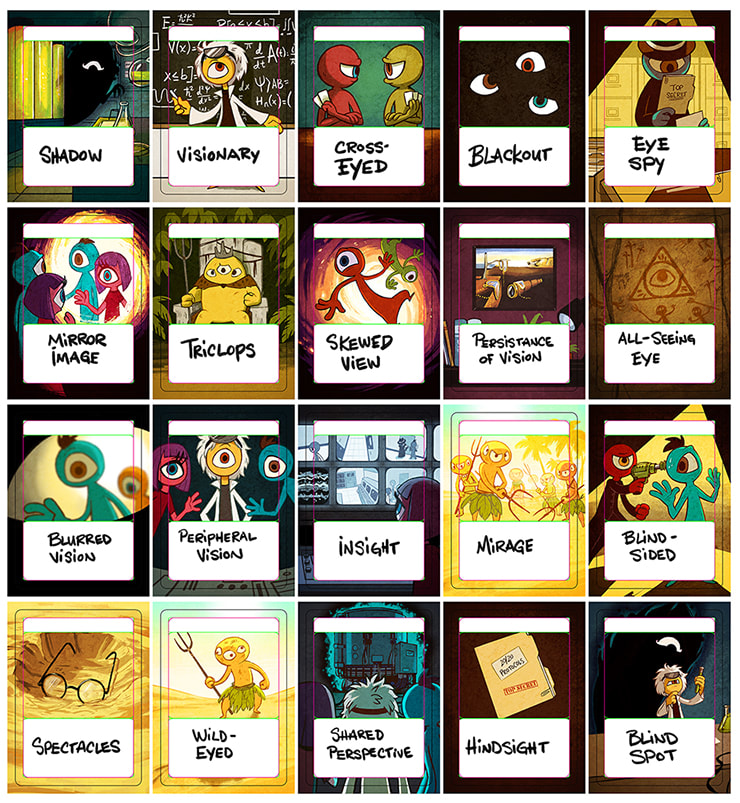
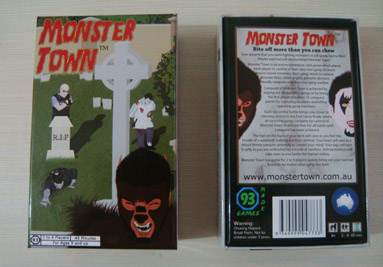
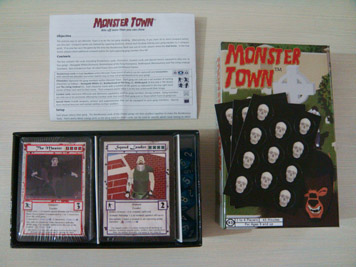
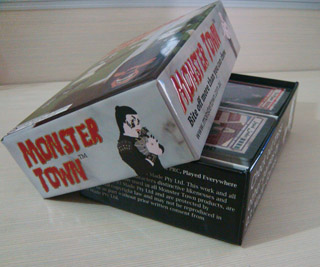
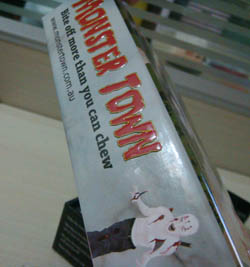
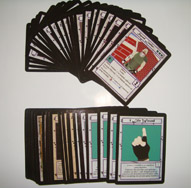
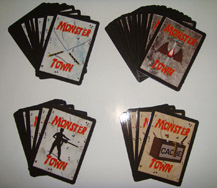
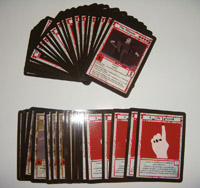
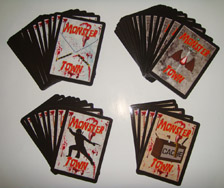
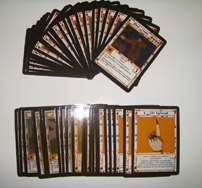
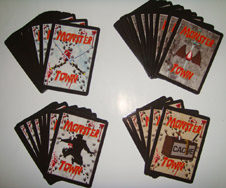
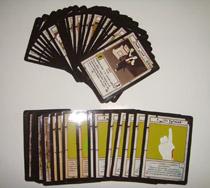

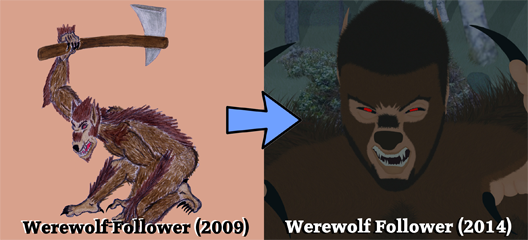
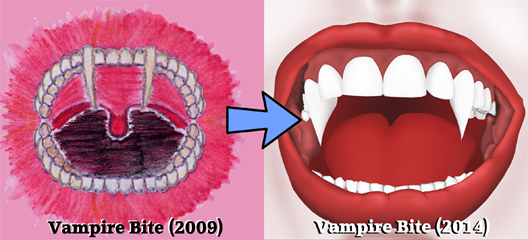
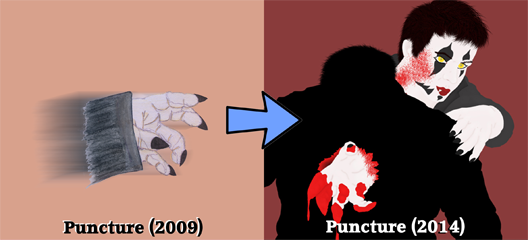
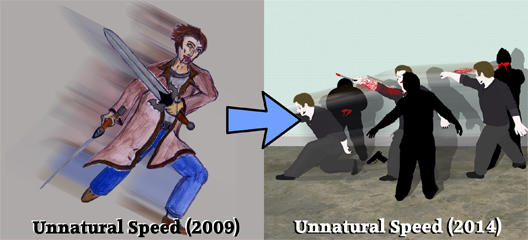
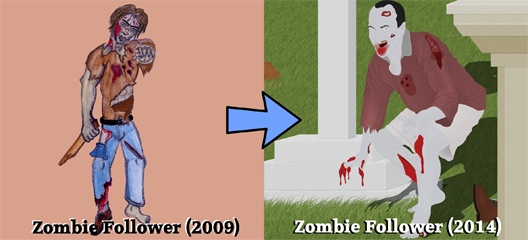
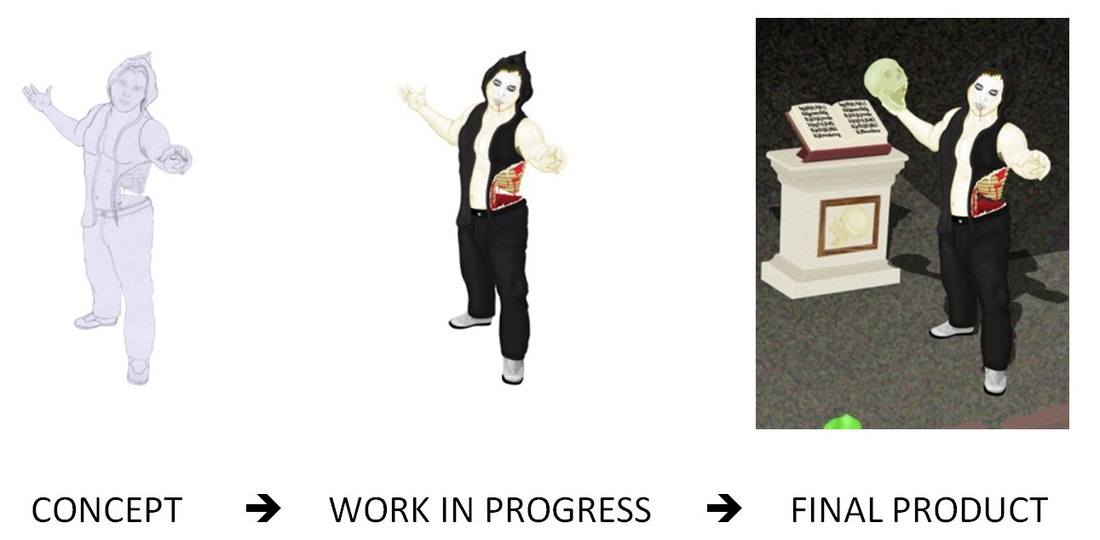
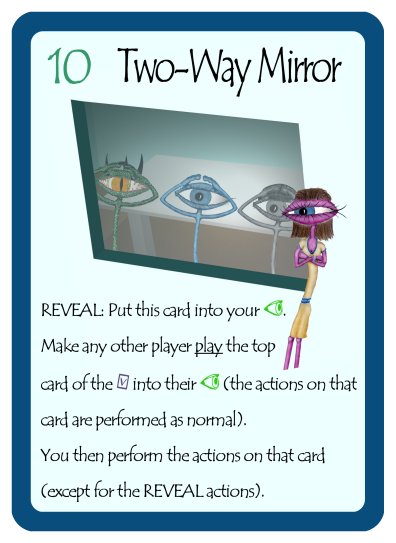
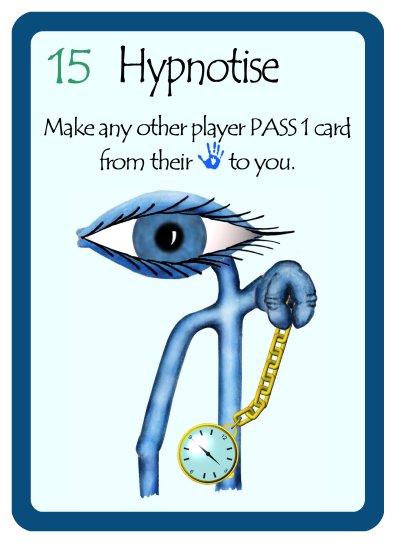

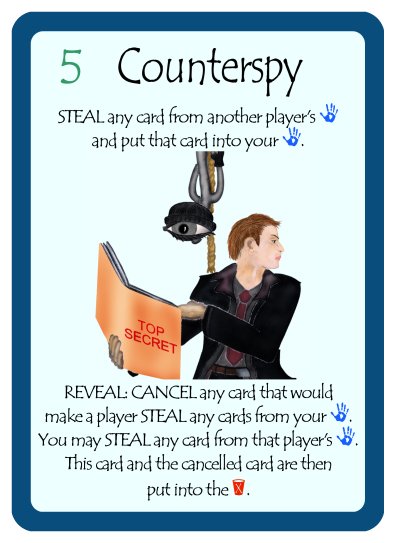
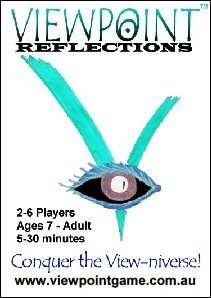
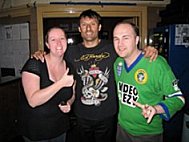
 RSS Feed
RSS Feed